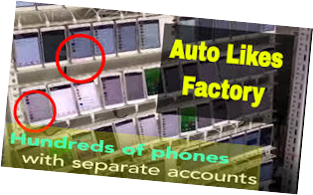Using and Evaluating E-resources
- Didi Zou
- Jul 9, 2020
- 5 min read
Updated: Apr 21, 2021
<The images/ videos/ partial content are from the internet. These materials are for educational reference only. >
Outline
Pros and cons of technology in the classroom
The evaluation process of e-resources
Types of e-resources and their various formats
The way forward: ‘New literacies’ & implications for classroom practices
Summing up

Many people say technology is a double-edged sword. To what extent do you agree with this opinion?
What might be the pros and cons of using technology in the language classroom?

When technology is great
Collect data about students’ learning
Provide timely help—students can get what they need when they need it.
Facilitate differentiated instruction—students learn at their own pace and use different resources/ systems to learn similar materials depending on their interest/ progress/ learning styles
Cater for special needs with assistive technology—e.g. text-to-speech software to help students with reading difficulty to cope with text-based materials
Change the role of the ‘textbook’—not everyone has to do the same thing at the same time in ‘lockstep’. Teachers and students can create content easily to supplement the textbook or extend their learning.
(Ronan 2017; Walker & White, 2014)
When technology is NOT great
Replace teachers
Distract students from learning (e.g. online socializing during class)
Easy access to others’ work—temptation to plagiarise instead of summarising and synthesizing
Disparity of access outside class—do our students have access to the device/ apps they need outside class? This is especially important in the case of flipped learning.
The issue of privacy—how to keep student information and data safe?
Can you think of any other issues?
(Ronan 2017)

An educator’s role in digital divide
Consider what options you have and assess your students’ learning needs.
Consider the culture of your learning context—what makes up the learners in your community? What would meet the needs of most learners living in this district?
Reflect on your own learning—do you have enough ‘Technological Pedagogical Content Knowledge’ to integrate IT effectively into your instruction?
Remember you cannot do this by yourself—being connected is the way to bridge the divide.
Incorporate ‘new literacies’ into the curriculum.
(Roberts 2016)
What needs to be considered?
As educators, we need to consider
curriculum goals and outcomes;
students’ backgrounds, abilities, interests and learning styles;
and learning resources available.
As language teachers, we need to pay extra attention to
whether the technology-supported components can provide favourable conditions for language learning to take place
and whether these components can provide for different kinds of language learners

Who should be involved?
Consultants/ specialists (if possible)
A selected committee of teachers who will be responsible for pre-selecting and evaluating the resources as a group
Students (if possible)
Recommendations should be made by the committee at the end of the evaluation process.
The evaluating process

What Technology Can I/Could I/Shall I/Should I/Would I/Will I Use?
The TPACK model is concerned with how teachers draw on knowledge of TECHNOLOGY, PEDAGOGY AND CONTENT for successful integration of technology in the teaching of a subject area.
TPACK consists of TECHNOLOGY + PEDAGOGY + CONTENT KNOWLEDGE

Initial steps
Begin with content knowledge. What do you want to teach?
Move on to pedagogy. How do you want to teach it?
Finally, consider some of the possible uses of technology. How can it be used to enhance, enrich or extend students' learning?
The SMAR Model

What kind of change do you want to bring?
The Substitution, Augmentation, Modification and Redefinition Model (SAMR) is a simple way to describe increasingly transformative levels of technology integration. In the simplest sense, SAMR describes the nature of the change an instructor affects by introducing technology.

Some general guiding principles
Quality: is the resource of high physical/ technical quality? Is it appealing to the intended audience?
Content: is it well structured/organised? Is it of high literary/ artistic quality? Does it contain appropriate or important topics in the curriculum?
Language: is it pitched at a suitable level for your students? What needs to be done to support comprehension?
Potential in catering for learner diversity and teaching styles: can it meet the varying needs of teachers and students? Teacher-directed / student-directed? Fiction/ non-fiction? Audio-visual/ text-based?
School priorities and policies: consider if the resources can address school priorities/ policies.
Instructional design: is it user-friendly? Is extensive training required before using? Does it take away too much curriculum time? Can it foster better understanding/ facilitate students’ learning?
Reputation of developer
Cost
Social consideration: is the material reasonably bias-free? Does it portray respect concerning gender, culture, ability, religion, socio-economic status, etc.? Materials with bias, however, may be used to help students develop critical thinking. But such materials should be used with teacher’s guidance.
Not every resource can meet all the criteria above. We should evaluate each resource based on its overall merit.
Types of e-resources
Student resources
Materials to help students meet curriculum goals
Reference materials e.g. dictionary
Teacher or instructional resources
Resources to be used by the teacher in the instructional process e.g. textbooks, teacher’s guides, etc.
Professional resources
Materials which can foster teachers’ professional development e.g. curriculum guides, academic journals, exemplar of effective teaching practices, etc.
Formats
Software for desktop/ laptop PCs or apps for tablets/ mobile phones
Literary/ informational texts
CDs/ audio recordings
DVDs/ video recordings
Websites
Subscription to newspapers, magazines or periodicals

Activity 1
How would you evaluate the resources listed here? Take notes to support your evaluation and rationale.
You may refer back to the some of the principles:
Does it match the learning goals/ outcomes?
Can it engage students’ interest?
Can it create favourable conditions for language learning?
Can it cater for different learners?
Other considerations: ease of navigation and maintenance, cost, level of language, etc.
New literacies
“The nature of literacy is undergoing profound change, and we have little research/ solid theory to inform our understanding of the consequences for classroom practice”. (Leu et al., 2007, p.37)

Activity 2—what new literacies are involved in the following tasks?
Choose either one of the following task and type your response here.
Task 1. Search online for the meaning of the expression ‘raining dogs and cats’ (pretend you have no knowledge of this expression). Report the list of e-resources you have used and give a brief description of the process.
Task 2. Read the following two articles. Which article appears to be more credible? What makes you think so? Report your view and the grounds which support your view.
What does new literacies encompass?
“The new literacies of the Internet and other ICT include the skills, strategies, and dispositions necessary to successfully use and adapt to the rapidly changing information and communication technologies and contexts that continuously emerge in our world and influence all areas of our personal and professional lives. These new literacies allow us to use the Internet and other ICT to identify important questions, locate information, critically evaluate the usefulness of that information, synthesize information to answer those questions, and then communicate the answers to others”. (Leu et al. 2004, p. 1570)
Definition of new literacies
Within this perspective, new literacies of online reading comprehension are defined around five major functions:
identifying important questions;
locating information;
analyzing information;
synthesizing information;
communicating information.
How can we foster new literacies in the classroom?
A few key factors (MediaSmarts)
provide authentic learning opportunities that are enhanced through technological tools;
position teachers as facilitators and co-learners, instead of knowledge transmitter and experts;
focus teacher training on how to use technology to enhance learning and meet curricular outcomes; and
create reasonable policies and less restrictive filters in schools so that teachers can better help students develop and exercise good judgment.
A recommended website about digital and medial literacy
Explore the teacher resources under each topic here. Then choose a topic which you would like to explore with your students. State the reasons and discuss how you may use the resources.
A framework for digital literacy (Media Smarts, 2016)


To sum up
Exit quiz on key concepts:
Remember:
It’s not about the tools. It’s about using the tools to facilitate students’ learning. (Churches 2009)
A successful technology-supported FL classroom is student-centered, carefully planned, technically well-supported and, most importantly, pedagogically well constructed. (Blake 2008)
References
Blake, R. (2008). Brave New Digital Classroom: Technology and Foreign Language Learning. Washington, DC: Georgetown University Press.
Leu, D., Zawilinski, L., Castek, J., Banerjee, M., Housand, B. C., Liu, Y. & O’ Neil, M. (2007). What is New about the New Literacies of Online Reading Comprehension? In L. S. Rush, A. J. Eakle & A. Berger, (Eds.), Secondary school literacy: What research reveals for classroom practice (pp.37-68). Urbana, IL: National Council of Teachers of English.
MediaSmarts (2016). A digital literacy framework for Canadian schools. Retrieved from http://mediasmarts.ca/sites/mediasmarts/files/pdfs/digital-literacy-framework.pdf
Roberts, V. (2016). Reflecting on an Educator's Role in the Digital Divide. Literacy Today, 33(4), 20.
Ronan, A. (2017, January 16). The Pros and Cons of Technology. Retrieved from http://www.edudemic.com/technology-pros-cons/
Walker, A. & White, G. (2013). Technology enhanced language learning: Connecting theory and practice. Oxford: OUP.








Comments